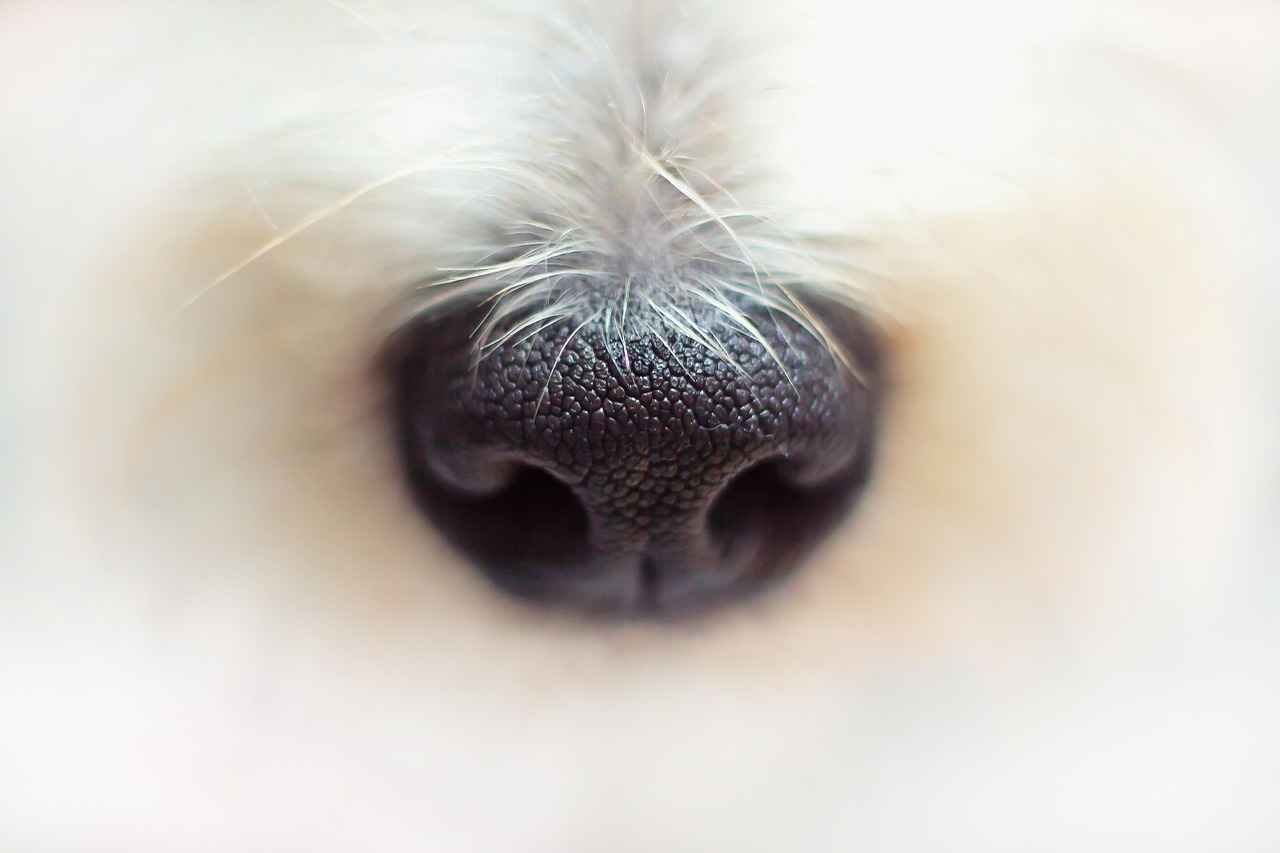This comprehensive guide outlines the essential steps to take after a dog bite incident, focusing on legal actions, medical care, and prevention strategies to ensure your rights and safety.
Experiencing a dog bite can be a traumatic event, and knowing what to do next is crucial. This guide will provide you with a step-by-step approach to navigate the aftermath of a dog bite, ensuring you are informed and prepared.
Understanding Dog Bite Laws
Dog bite laws differ significantly across states, which can affect your legal rights and the compensation you may receive. Understanding these laws is critical to effectively navigate your options after an incident.
Immediate Steps to Take After a Dog Bite
- Assess the Injury: Determine the severity of the bite to decide if immediate medical attention is needed.
- Document the Incident: Take photos of the injury and the scene, and gather contact information from witnesses.
Seeking Medical Attention
It is vital to seek professional medical care promptly. A medical professional can evaluate the injury, provide necessary treatment, and document your injuries for potential legal claims.
Types of Medical Treatments
- Wound cleaning and dressing
- Antibiotics to prevent infection
- Tetanus shot if necessary
Understanding Your Legal Rights
Knowing your rights after a dog bite is essential. You may have the right to file a claim for damages, which can include medical expenses, lost wages, and pain and suffering.
Preventing Future Dog Bites
Prevention strategies are vital for reducing the risk of dog bites in the future. This includes educating the public about dog behavior and promoting responsible pet ownership.
Conclusion: Moving Forward After a Dog Bite
Recovering from a dog bite involves both physical healing and legal considerations. It is essential to seek support, understand your rights, and take steps to prevent future incidents.

Understanding Dog Bite Laws
Dog bite laws are not uniform across the United States; they vary significantly from state to state, affecting both liability and compensation for victims. Understanding these laws is crucial for anyone involved in a dog bite incident, as they dictate the legal recourse available to victims and the responsibilities of dog owners.
In many states, the law follows a principle known as strict liability, meaning that dog owners can be held responsible for bites regardless of whether the dog has shown aggressive behavior in the past. This is particularly relevant in states with a strong stance on protecting victims. Conversely, other states may adhere to a one-bite rule, where the owner is only liable if they knew or should have known about the dog’s propensity to bite.
Additionally, the concept of negligence plays a significant role in determining liability. If a dog owner fails to exercise reasonable care, such as not securing their dog or allowing it to roam freely, they may be held liable for any resulting injuries. Understanding the nuances of these laws can empower victims to navigate their legal options effectively.
It’s also vital for victims to be aware of the statute of limitations, which varies by state, dictating the timeframe within which a claim must be filed. Failing to adhere to these timelines can result in losing the right to seek compensation.
Overall, comprehending dog bite laws is essential for victims to ensure their rights are protected and to pursue appropriate compensation for their injuries. Consulting with a legal expert in your state can provide clarity and guidance tailored to your specific situation.

Immediate Steps to Take After a Dog Bite
Experiencing a dog bite can be a distressing event, and knowing the right steps to take immediately afterward is crucial for both your health and your legal rights. Here’s a detailed guide on what to do right away:
- Stay Calm: It’s important to keep a level head. Panic can make the situation worse.
- Assess the Injury: Check the severity of the bite. If it’s bleeding heavily or if you suspect a serious injury, seek medical attention immediately.
- Clean the Wound: If the injury is minor, wash the bite area gently with soap and water to reduce the risk of infection.
- Apply a Bandage: Cover the wound with a sterile bandage to protect it from dirt and bacteria.
- Document the Incident: Take photos of the injury and the location where the bite occurred. This documentation can be vital for any future legal claims.
- Gather Information: Collect details about the dog, its owner, and any witnesses present during the incident. This information is crucial for establishing liability.
- Report the Incident: Notify local animal control or the police about the bite, especially if the dog is a stray or shows signs of aggression.
- Seek Medical Attention: Even if the bite seems minor, it’s wise to consult a healthcare professional to assess the risk of infection and to receive proper treatment.
- Follow-Up Care: Keep an eye on the wound for signs of infection, such as increased redness, swelling, or pus. If any of these symptoms occur, return to your doctor.
Documenting the incident is not just for your health; it’s also a crucial step for any potential legal action. Having a record of the event can help establish the circumstances surrounding the bite and support your case if you decide to pursue compensation for medical expenses or emotional distress.
In summary, taking immediate and appropriate action after a dog bite can significantly impact your recovery and legal options. Always prioritize your health and safety, and don’t hesitate to seek professional help.
Assessing the Severity of the Injury
When a dog bite occurs, the immediate concern should be the health and safety of the victim. Evaluating the severity of a dog bite is essential not only for determining the appropriate medical treatment but also for understanding the potential legal implications. Recognizing serious injuries can significantly influence the course of action following the incident.
Dog bites can range from minor punctures to severe lacerations that may require surgical intervention. Here are some key factors to consider when assessing the severity:
- Depth of the Wound: A superficial scratch may not require extensive treatment, while deep punctures or lacerations can damage underlying tissues, nerves, or blood vessels.
- Location of the Bite: Bites on sensitive areas such as the face, neck, or hands may lead to more complications and should be evaluated promptly.
- Signs of Infection: Symptoms such as redness, swelling, warmth, or discharge can indicate an infection, necessitating immediate medical attention.
- Victim’s Medical History: Individuals with compromised immune systems or pre-existing conditions may face higher risks of complications.
In cases where the injury appears serious, it is crucial to seek urgent medical care. A healthcare professional can assess the wound, provide necessary treatment, and determine if further interventions, such as stitches or antibiotics, are needed.
Furthermore, documenting the injury and any medical treatment received is vital for potential legal claims. Take photographs of the injury and keep records of medical visits, as these can serve as essential evidence in the event of a lawsuit.
In summary, understanding how to assess the severity of a dog bite can not only aid in obtaining the right medical care but also protect your legal rights. Always err on the side of caution and consult a medical professional when in doubt.
Recognizing Signs of Infection
Dog bites can lead to serious complications, including infections. It is crucial to be aware of the symptoms that may indicate an infection, as early detection can significantly improve treatment outcomes.
After a dog bite, monitor the affected area closely for the following signs:
- Redness around the wound: While some redness is normal after a bite, increased redness that spreads is a cause for concern.
- Swelling: Noticeable swelling may indicate that the body is responding to an infection.
- Pain: If the pain intensifies rather than improves, it could be a sign of infection.
- Warmth: An infected area may feel warm to the touch compared to surrounding skin.
- Pus or discharge: The presence of pus is a clear indicator of infection and requires immediate medical attention.
- Fever: A systemic response, such as a fever, can indicate that the infection is affecting the body as a whole.
It is important to seek medical attention if you notice any of these symptoms. Prompt treatment can help prevent the infection from worsening and reduce the risk of complications.
In addition to these physical symptoms, be aware of changes in overall health. If you experience fatigue, chills, or any unusual symptoms following a dog bite, do not hesitate to consult with a healthcare professional.
When to Seek Medical Attention
Always err on the side of caution. If you suspect an infection or if the wound is deep, seek medical attention promptly. A healthcare provider can assess the wound, possibly prescribe antibiotics, and ensure the best course of action for recovery.
Being informed and vigilant can make a significant difference in your healing process after a dog bite.
First Aid Measures
When faced with a dog bite, prompt and effective first aid can play a crucial role in the recovery process. It is essential to act quickly and calmly to minimize the risk of complications and ensure the best possible outcome. Below are the recommended steps to take immediately following a dog bite incident:
- Stay Calm: Assess the situation carefully. Avoid panicking, as this can escalate the stress for both you and the injured person.
- Control the Bleeding: If the wound is bleeding, apply gentle pressure using a clean cloth or bandage. Elevate the injured area if possible to help reduce blood flow.
- Clean the Wound: Once bleeding is controlled, rinse the wound under clean, running water for at least 5-10 minutes. Use mild soap to clean around the area, but avoid scrubbing the wound itself.
- Apply an Antibiotic: After cleaning, apply an over-the-counter antibiotic ointment to prevent infection. Cover the wound with a sterile bandage.
- Monitor for Signs of Infection: Keep an eye on the wound for symptoms such as increased redness, swelling, or pus. If any of these occur, seek medical attention.
- Seek Professional Help: Regardless of the severity, it is advisable to consult a healthcare professional after a dog bite. They can assess the wound, determine if stitches are necessary, and evaluate the need for a tetanus shot or rabies vaccination.
Documenting the incident is also vital. Take photographs of the wound and note any details about the dog, including its owner and vaccination status. This information can be invaluable for legal purposes.
In summary, proper first aid for a dog bite can significantly affect recovery. By following these steps, you can help ensure the best possible outcome while waiting for professional medical assistance.
Collecting Evidence for Your Case
When you have experienced a dog bite, gathering evidence is essential for building a strong legal case. This process not only supports your claims but also ensures that you have the necessary documentation to seek compensation for your injuries. Below are some critical steps to effectively collect evidence after a dog bite incident.
- Document the Scene: As soon as possible after the incident, take detailed notes about the location where the bite occurred. Include information such as the time, weather conditions, and any relevant surroundings that could impact the case.
- Take Photographs: Capture clear images of the injury, the dog involved, and the surrounding area. These visual records can serve as powerful evidence in court.
- Obtain Witness Statements: If there were any witnesses to the incident, gather their contact information and ask them to provide written statements regarding what they saw. Witness accounts can be critical in establishing the circumstances of the attack.
- Collect Medical Records: Seek immediate medical attention and keep all medical records related to your treatment. These documents should detail the nature of your injuries, the treatment provided, and any follow-up care required.
- Report the Incident: File a report with local animal control or law enforcement. This official documentation can help support your case and may also provide additional information about the dog’s vaccination history.
In conclusion, the process of collecting evidence is vital for any legal claim resulting from a dog bite. By documenting the scene, obtaining witness statements, and gathering medical records, you will be better equipped to pursue your rights and seek appropriate compensation for your injuries. Always ensure that you act promptly to preserve evidence, as this can significantly impact the outcome of your case.

Seeking Medical Attention
after a dog bite is a critical step that should never be overlooked. The immediate aftermath of such an incident can be overwhelming, but prioritizing professional medical care is essential for both physical and psychological recovery.
When a dog bite occurs, the risk of infection is significant. Bacteria from the dog’s mouth can enter the wound, leading to complications if not treated promptly. Seeking medical attention ensures that a healthcare professional can properly assess the injury, administer necessary treatments such as antibiotics, and provide vaccinations, including tetanus or rabies shots if required.
Moreover, the psychological effects of a dog bite can be profound. Victims may experience anxiety, fear, or even post-traumatic stress disorder (PTSD). Consulting with a mental health professional can help address these emotional challenges, providing coping strategies and support for recovery.
Here are some key reasons why immediate medical attention is vital:
- Infection Prevention: Proper cleaning and treatment of the wound can significantly reduce the risk of infection.
- Accurate Diagnosis: A medical professional can evaluate the severity of the injury and recommend appropriate treatment.
- Psychological Support: Addressing emotional trauma is just as important as physical healing.
- Documenting the Injury: Medical records can serve as crucial evidence in any potential legal case.
In conclusion, prompt medical care following a dog bite is not just about treating physical injuries; it encompasses a holistic approach to recovery. By seeking professional help, victims can ensure they receive the comprehensive care needed to heal both physically and emotionally.
Types of Medical Treatments
Understanding the various medical treatments available for dog bite injuries is crucial for effective recovery. Prompt and appropriate care can significantly influence healing and prevent complications. This section outlines the common medical interventions that may be necessary following a dog bite incident.
- Wound Cleaning and Care: The first step in treating a dog bite is thorough cleaning of the wound. This typically involves rinsing the area with saline or clean water to remove dirt and bacteria. Proper wound care helps reduce the risk of infection.
- Antibiotics: Depending on the severity of the bite and the risk of infection, a healthcare provider may prescribe antibiotics. These medications are essential for preventing bacterial infections that can occur after a bite.
- Tetanus Shot: If the bite is deep or if the victim has not had a tetanus shot in the last five years, a booster may be necessary. Tetanus is a serious condition that can arise from wounds, making this intervention critical.
- Stitches or Sutures: For deeper wounds, stitches may be required to promote proper healing. This procedure helps close the wound, reduces scarring, and minimizes the risk of infection.
- Pain Management: Pain relief is an important aspect of treatment. Over-the-counter pain relievers or prescribed medications may be recommended to manage discomfort effectively.
- Psychological Support: In some cases, dog bite victims may experience psychological trauma. Counseling or therapy can be beneficial for those struggling with anxiety or fear following the incident.
Each dog bite case is unique, and the appropriate treatment will depend on various factors, including the severity of the injury and the individual’s health history. It is essential to seek professional medical advice to determine the best course of action for recovery.
Follow-Up Care and Recovery
Recovering from a dog bite can be a complex process that often requires ongoing care and attention. It is essential to understand the significance of follow-up appointments and various rehabilitation options available to ensure a complete recovery.
After receiving initial treatment for a dog bite, patients should schedule follow-up visits with their healthcare provider. These appointments are crucial for:
- Monitoring Healing: Regular check-ups allow medical professionals to assess the healing progress of the wound and identify any complications early.
- Preventing Infections: Dog bites can lead to infections, which may not be immediately apparent. Follow-up care helps in detecting signs of infection, such as increased redness, swelling, or discharge.
- Managing Pain: Persistent pain or discomfort may require adjustments in pain management strategies, which can be addressed during follow-up visits.
In addition to medical follow-ups, rehabilitation options may be necessary, especially if the bite has resulted in physical limitations. Rehabilitation can include:
- Physical Therapy: Tailored exercises can help restore movement and strength in the affected area.
- Counseling: Psychological support may be beneficial for those experiencing trauma or anxiety related to the incident.
- Occupational Therapy: This can assist individuals in regaining their ability to perform daily activities effectively.
Ultimately, the path to recovery from a dog bite is multifaceted and requires a proactive approach to follow-up care and rehabilitation. By prioritizing these aspects, victims can enhance their healing process and regain their quality of life.

Understanding Your Legal Rights
After experiencing a dog bite, it is essential to understand your legal rights to ensure you receive the compensation and support you deserve. This section provides an overview of potential claims and compensation avenues available to victims, empowering you to take informed action.
Dog bite laws can differ significantly from state to state, affecting the liability of the dog owner and the potential compensation available to victims. Familiarizing yourself with these laws is crucial, as they dictate the legal framework surrounding your case.
- Types of Claims: Victims may pursue various claims, including personal injury claims, medical expense claims, and in some cases, emotional distress claims.
- Compensation: Compensation can cover medical bills, lost wages, pain and suffering, and any long-term rehabilitation needs.
- Negligence: In many cases, proving that the dog owner was negligent (e.g., failing to secure their dog or not warning you of its aggressive behavior) can strengthen your claim.
It’s important to document everything related to the incident, as this evidence will be vital if you decide to pursue legal action. Collect witness statements, photographs of the injury, and any medical records that detail your treatment.
If you are considering filing a claim, it is advisable to consult with a legal professional who specializes in dog bite cases. They can guide you through the process, help you understand your rights, and ensure that you meet all necessary deadlines.
In conclusion, knowing your rights after a dog bite is not just about seeking justice; it is also about ensuring your well-being and recovery. By understanding the legal landscape and available avenues for compensation, you can take meaningful steps towards healing and closure.
Liability and Negligence in Dog Bite Cases
Understanding liability is crucial when navigating the aftermath of a dog bite incident. In many jurisdictions, the law holds dog owners accountable for the actions of their pets, particularly if negligence can be established. This section will delve into the concept of negligence as it relates to dog bites and explore potential defenses that may arise in legal cases.
What Constitutes Negligence?
Negligence occurs when a party fails to act with the level of care that a reasonably prudent person would exercise in similar circumstances. In the context of dog bites, this can manifest in several ways:
- Failure to Leash: If a dog owner allows their dog to roam freely in public spaces without a leash, they may be deemed negligent.
- Ignoring Warning Signs: A dog that has previously shown aggressive behavior requires careful handling. Ignoring these signs can lead to liability.
- Inadequate Training: Owners who do not properly train their dogs may be held responsible if their dog bites someone.
Establishing Liability
To establish liability in a dog bite case, the victim must prove that the owner was negligent and that this negligence directly resulted in the injury. This often involves collecting evidence such as:
- Witness testimonies
- Medical records
- Photographs of the scene
Potential Defenses Against Liability
Dog owners may present several defenses to counter claims of negligence, including:
- Provocation: If the victim provoked the dog, the owner may argue that the bite was a reaction to this provocation.
- Assumption of Risk: If the victim was aware of the dog’s aggressive tendencies and chose to approach it, the owner may claim that the victim assumed the risk of injury.
In summary, understanding the nuances of liability and negligence is essential for both victims and dog owners. By grasping these concepts, individuals can better navigate the complexities of legal proceedings following a dog bite incident.
Filing a Claim: What to Expect
Filing a claim after a dog bite can indeed feel overwhelming. However, understanding the process can significantly ease your concerns and help you take the necessary steps to protect your rights. This section provides a detailed overview of what to expect when filing a claim, including crucial timelines and essential documentation required to support your case.
Firstly, it is important to act quickly. Most jurisdictions have specific statutes of limitations that dictate how long you have to file a claim after the incident. Typically, this period ranges from one to three years, depending on local laws. Therefore, initiating the process as soon as possible is advisable to ensure you do not miss any deadlines.
Next, you will need to gather documentation to support your claim. This includes:
- Medical Records: Obtain all medical records related to your treatment for the dog bite. This should include initial evaluations, treatment plans, and any follow-up care.
- Incident Reports: If the dog bite was reported to local authorities, ensure you acquire a copy of the report, as it can serve as vital evidence.
- Witness Statements: If there were any witnesses to the incident, their statements can provide additional support for your case.
- Photographs: Take clear photographs of your injuries and the location where the bite occurred, as visual evidence can be compelling.
Once you have gathered the necessary documentation, the next step is to file your claim with the appropriate insurance company or legal entity. Be prepared to provide all collected evidence and any additional information they may request. The claims process can vary in duration, often taking weeks or even months, depending on the complexity of your case and the responsiveness of the involved parties.
In conclusion, while filing a claim after a dog bite may seem daunting, being informed about the process can empower you. By understanding the timelines, gathering the right documentation, and taking prompt action, you can effectively navigate the claims process and seek the compensation you deserve.

Preventing Future Dog Bites
Prevention is essential for reducing the incidence of dog bites, which can lead to serious injuries and emotional distress. By implementing effective strategies, both dog owners and the general public can work together to minimize risks and promote safety.
Education and Awareness Programs
Community education plays a vital role in preventing dog bites. Programs aimed at raising awareness about dog behavior and safety can significantly reduce incidents. These initiatives often include:
- Workshops: Conducting workshops that teach children and adults how to interact safely with dogs.
- Public Campaigns: Utilizing social media and local advertising to spread awareness about responsible dog ownership.
- School Programs: Implementing educational programs in schools that focus on understanding dog body language and appropriate ways to approach dogs.
Responsible Dog Ownership Practices
Dog owners play a crucial role in preventing bites. By adhering to responsible ownership practices, they can help ensure their pets are well-behaved and safe. Key practices include:
- Training: Enrolling dogs in obedience classes to teach them basic commands and proper behavior.
- Socialization: Exposing dogs to various environments, people, and other animals to reduce fear and anxiety.
- Supervision: Always supervising interactions between dogs and children to prevent unsupervised play that may lead to bites.
- Health Checks: Regular veterinary visits to ensure dogs are healthy and free from conditions that may cause aggression.
Community Involvement
Engaging the community in dog safety initiatives can create a safer environment for everyone. This can include:
- Neighborhood Watch Programs: Establishing programs that encourage residents to report stray dogs or aggressive behavior.
- Dog Parks: Creating designated areas for dogs to play safely while ensuring they are properly supervised.
By focusing on education, responsible ownership, and community involvement, we can significantly reduce the risk of dog bites and promote a safer environment for both dogs and humans.
Education and Awareness Programs
Community education plays a crucial role in preventing dog bites by fostering understanding and promoting responsible behaviors among dog owners and the general public. Various programs aim to raise awareness about dog safety, focusing on both education and practical strategies to minimize risks.
| Program Name | Description | Target Audience |
|---|---|---|
| Dog Safety Workshops | Interactive sessions teaching safe behaviors around dogs, including how to approach and interact with them. | Families, children, and community members. |
| Responsible Pet Ownership Seminars | Programs that educate dog owners on proper training, socialization, and care to prevent aggressive behaviors. | Current and prospective dog owners. |
| School Education Initiatives | Curricula designed for schools that teach children how to safely behave around dogs and recognize warning signs. | Students and educators. |
These programs often include hands-on activities, expert presentations, and resources that empower individuals to make informed decisions regarding dog interactions. Additionally, community outreach efforts, such as flyers, social media campaigns, and local events, help disseminate vital information about dog safety.
- Engaging with Local Shelters: Collaborating with animal shelters to provide education on adoption and responsible pet care.
- Hosting Community Events: Organizing dog safety days that include demonstrations on proper handling and training techniques.
- Utilizing Digital Platforms: Creating online resources, videos, and articles that can be easily accessed by a wider audience.
By investing in community education and awareness programs, we can significantly reduce the incidence of dog bites and create a safer environment for both dogs and humans. Knowledge is power, and through effective education, we can foster a culture of respect and understanding towards our canine companions.
Responsible Dog Ownership Practices
Responsible dog ownership is essential in creating a safe environment for both pets and the community. By following best practices, dog owners can significantly reduce the risk of dog bite incidents and ensure their pets are well-behaved. This guide outlines key strategies for responsible ownership.
- Proper Training: Enrolling your dog in obedience classes can help instill good behavior. Training should focus on basic commands such as sit, stay, and come, which are vital for controlling your dog in various situations.
- Socialization: Exposing your dog to different people, pets, and environments from a young age can help them become more adaptable and less fearful, reducing the likelihood of aggressive behavior.
- Regular Exercise: Providing your dog with sufficient physical activity can help alleviate behavioral issues that stem from boredom or excess energy. A well-exercised dog is generally calmer and more manageable.
- Health Care: Regular veterinary check-ups ensure that your dog is healthy and free from conditions that could lead to aggressive behavior. Vaccinations and preventive care are essential in maintaining your dog’s well-being.
- Understanding Dog Behavior: Educating yourself about canine body language can help you recognize signs of stress or aggression. This knowledge allows you to intervene before a situation escalates.
- Leashing and Containment: Always use a leash in public spaces and ensure your yard is securely fenced. This prevents your dog from wandering off and potentially causing harm to others.
- Responsible Breeding: If you are a breeder, prioritize the health and temperament of your dogs. Responsible breeding practices can lead to well-adjusted pets that are less likely to exhibit aggressive tendencies.
By implementing these responsible ownership practices, dog owners can play a crucial role in preventing dog bites and promoting a harmonious relationship between dogs and the community. Remember, a well-cared-for dog is not only a joy to own but also a safe companion.

Conclusion: Moving Forward After a Dog Bite
Recovering from a dog bite is a multifaceted process that encompasses both physical healing and important legal considerations. This journey can be challenging, but understanding the necessary steps can empower victims to navigate their recovery effectively.
Firstly, it’s crucial to seek immediate medical attention after a dog bite. Prompt treatment can prevent complications such as infections and ensure that wounds are properly cared for. Medical professionals can assess the severity of the injuries and provide appropriate care, which may include cleaning the wound, stitches, or vaccinations.
In addition to physical recovery, victims should also focus on the legal aspects of the incident. Understanding local dog bite laws is essential, as these laws vary significantly by state. Victims should document the incident meticulously, including taking photographs of injuries, gathering witness statements, and obtaining a copy of the medical report. This evidence is vital for any potential legal claims.
Furthermore, victims are encouraged to consult with a legal professional who specializes in personal injury or dog bite cases. An attorney can provide valuable guidance on the rights of the victim, potential compensation avenues, and the process of filing a claim. This support can alleviate some of the stress associated with navigating legal proceedings.
Recovering from a dog bite also involves seeking emotional support. Many victims experience anxiety or trauma following such incidents. Engaging with mental health professionals or support groups can be beneficial in addressing these feelings and promoting overall well-being.
In conclusion, recovering from a dog bite requires a comprehensive approach that includes medical care, legal knowledge, and emotional support. By taking proactive steps and seeking assistance, victims can move forward on their path to recovery with confidence.
Frequently Asked Questions
- What should I do immediately after a dog bite?
First and foremost, ensure your safety and the safety of others. Clean the wound with soap and water, apply a sterile bandage, and seek medical attention if necessary. Document the incident by taking photos and collecting witness information.
- How do I know if I need medical attention after a dog bite?
If the bite is deep, bleeding profusely, or shows signs of infection like redness or swelling, you should definitely see a doctor. Even minor bites can lead to infections, so it’s wise to get checked out.
- What are my legal rights if I am bitten by a dog?
You have the right to seek compensation for medical bills, pain and suffering, and other damages. Understanding your state’s dog bite laws is crucial, as they vary widely and can impact your case.
- How can I collect evidence for my case?
Gather as much information as possible. This includes taking photos of the injury and the scene, obtaining witness statements, and keeping all medical records related to your treatment.
- What can I do to prevent future dog bites?
Education is key! Encourage responsible dog ownership and participate in community programs that promote dog safety. Always approach unfamiliar dogs cautiously and teach children how to interact safely with pets.












